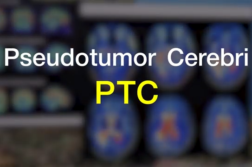MIAMI. (Ivanhoe Newswire) — Upper limb spasticity is a painful condition caused by extremely tight muscles the person cannot control. It’s often a side effect of stroke, neurological disease or brain injury. Now a new type of toxin similar to Botox may provide relief.
Barbara Aparicio loves having her family visit. She has multiple sclerosis. It’s caused blindness in one eye, forced her into a wheelchair and even affected the muscles in her right arm.
“My arm gets very stiff, a lot of spasticity and also pain,” described Aparicio.
Barbara’s arm was so stiff she couldn’t straighten it, making even the simplest tasks very difficult. The tight muscles were also incredibly painful.
Bruce Rubin, M.D., a board certified neurologist at Design Neuroscience Center in Miami, Florida, told Ivanhoe, “I asked her on a scale of one to ten, how bad is your pain and she said, ‘usually around a nine.’”
While Dr. Rubin couldn’t restore the use of Aparicio’s arm, he thought he could get rid of her pain. He injected Xeomin into the muscles. It is similar to Botox.
“The injections of toxins allowed her arm to relax, allowed the muscles to relax and effectively reduced the pain, so she was much more comfortable,” explained Dr. Rubin.
Being able to straighten her arm makes getting dressed a lot easier and being pain free makes spending time with her grandkids a lot more enjoyable.
Aparicio said, “To me, the treatment is like a miracle. It’s something very, very beneficial for me.”
Like Botox, this treatment does wear off so Aparicio has to get the injections every three months.
Contributors to this news report include: Cyndy McGrath, Supervising Producer; Robbi Peele, Field Producer; Milvionne Chery, Assistant Producer; Tony D’Astoli, Editor; Andrew Smith, Videographer.
MEDICAL BREAKTHROUGHS
RESEARCH SUMMARY
TOPIC: Toxins Relax Rigid Muscles
REPORT: MB #4154
BACKGROUND: Twelve million adults suffer from limb spasticity worldwide, a condition where the muscles are constantly contracted and therefore, they remain stiff. Upper limb spasticity is the result of damage to the nervous system. This can often lead to unusual and uncontrollable muscle movements such as spasms. The job of the nervous system is to transmit electrical signals back and forth from the brain to different parts of the body. Normally, the brain quickly sends signals that travel through the spinal cords and then through nerves that branch out to organs and all other body parts. When there’s an injury or damage to the nervous system, these electrical messages are disrupted and the brain begins to send too many messages. This is what causes the muscles to stiffen and contract. Some of the most common causes of upper limb spasticity are strokes, multiple sclerosis, spinal cord injury, traumatic brain injury or adult cerebral palsy.
(Source: http://familydoctor.org/familydoctor/en/diseases-conditions/upper-limb-spasticity/causes-risk-factors.html)
SYMPTOMS: Adults suffering from limb spasticity have a very hard time completing some of the most basic daily tasks, such as holding a cup. The severity of symptoms varies among patients from mild to severe. The symptoms include:
-Muscle stiffness (known as hypertonia)
-Limited range of movement
-Reduced ability to relax muscles
-Muscle spasms
-Changes in limb position
-Pain
-Rotated shoulder
-Clenched fist
(Source: http://www.xeomin.com/consumers/upper-limb-spasticity-adults/)
TREATMENT: The goal for treating upper limb spasticity is to work on keeping the muscles from becoming too stiff. This sort of treatment will allow the patient to move their arms again. Therapy is a very important form of treatment for patients suffering from upper limb spasticity because it keeps the muscles moving. Treatment options include exercise; stretching the muscles helps them from becoming too tight. Braces might also be beneficial because they hold the muscles and joints together. Botox has been known to relax and ease the muscles, which would require an injection of it directly into the affected muscles. There are also other drugs that could help ease the pain of spasticity such as baclofen, tizanidine, and diazepam. Lastly, a few other treatment options might include nerve block injections to stop the spasms, and surgery which can be used to cut the connections between the nerves and muscles.
(Source: http://www.webmd.com/brain/upper-limb-spasticity#3-6)
FOR MORE INFORMATION ON THIS REPORT, PLEASE CONTACT:
Fiona Farley
Public Relations
If this story or any other Ivanhoe story has impacted your life or prompted you or someone you know to seek or change treatments, please let us know by contacting Marjorie Bekaert Thomas at mthomas@ivanhoe.com




